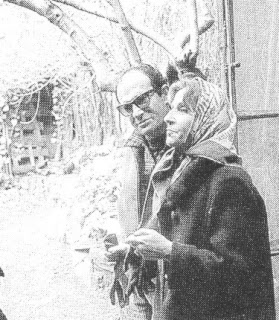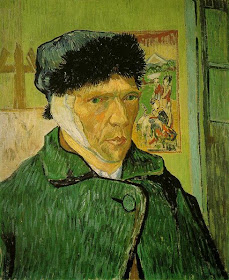 |
| That drawing on my wall! |
Something occurred to me recently while lost in the haze of a gaze at a drawing doing its thing on my wall, as drawings are want to do, their thing, whether anyone is looking or not, that thing, patient, dancing, posing, strutting, gesticulating, or simply being. So I was admiring this drawing, a drawing I have had for almost 50 years, as it spoke to me in soothing tones, as it gently showed me the way for the umpteenth million time, while I have been stupid and arrogant and off course and flailing about, and once more it whispered to me in its way, kindly, generously, without force or noise or fanfare, like some tree that silently gave me comfort and shade and solace.
 |
| Me & Xeni on our terrace at Via Margutta 48 |
This started in about 1962. In Rome. Via Margutta. Number 51. He had a studio off the far right side of the courtyard. We lived next door at 48, and because I had a beautiful studio there that had supposedly belonged to Raphael, the other artists called me Piccolo Raffaello. After school or on the weekends, I would quietly inch my way into the doorway of his studio trying not to disturb him while he was working. I was about 9. If he wasn't welding, he would have been grinding and hammering metal, or drawing, goggles still on his head, face blackened where they weren't, a cigarette hanging from his mouth. He would let me watch, and would go about his work. He knew I was there. Soaking it all up. Learning. Dreaming. Taking note. Because this was it. The way.
There isn't enough time to tell this story. But when I look at my life now, when I look at my work, I realize that this is where it all came from. Every bit of it. The spirit. The form. The contemplation. The work. The way.


Brain experts say all we do is model. We model on things, after things. We don't really have ideas. We just model. Unconsciously. And to a certain extent for once I would have to agree. This was my model, and I never even realized it. When it finally struck me, thunder struck me, it rushed in like water, the floodgates opened wide. Overwhelming me. Spinning me around. Carrying me upward. It was all there. Everything.
His work stood up, tall, vertical, abstract, but still a figure of sorts, with wings, like an angel, like a light, like a plant, a tree, a flower, a fountain, a spring of life! The radiant life-giving force. The shine. The shine within all things. Sentinel. Standing guard. Guardian. Standing strong. The protector. Noble. At the ready. The champion. The knight. The angel Gabriel. Avatar. His Avatar. A modern day avatar channeling the old world chivalry and valor and virtue of the sacred knights of centuries past charged with the quest, the good and humble devotion to the service of all humanity. Art. Artist. Do some good.
 |
| Sculpture was my first love. One of mine. |
 |
| Wall drawings of mine that sprang from doodles |
And this sculptor that I had watched work so often, he labored, he pursued his quest like the knight. He hammered and cut and welded steel. He shaped steel. He made it shine. He made it fly. And he was not a world famous artist that I was aware of. Because he did not act important. He did not act celebrated. He did not strut. But famous and important artists knew him. Alexander Calder, David Smith, Gino Severini, DiChirico, Fontana, Pomodoro. Their works all hung on his walls, and so did mine. I met them on his roof deck, laughing, drinking, talking up a storm, while he operated the grill like the artist he was, like the creator, at the forge, in the fire, squinting, cigarette pursed in his mouth, gesturing with tongs in hand. When I saw his towering piece in Spoleto at the first festival there organized by Giovanni Carandente in 1964, I have to say I was, well, ok, about time! We were Carandente's guest on his beautiful roof deck. Carandente, Italy's foremost and most beloved art critic, appreciated his work!
 |
| Next to his sculpture in Spoleto |
Addison Parks, Spring Hill, Dec. 2012
 |
| Nino and Gina Franchina, Via Margutta 51 studio |
 |
| 1964 Mostra D’Arte Dei Cento Pittori; Rome, Italy My sister DD watching my paintings at Via Margutta 48 |





























